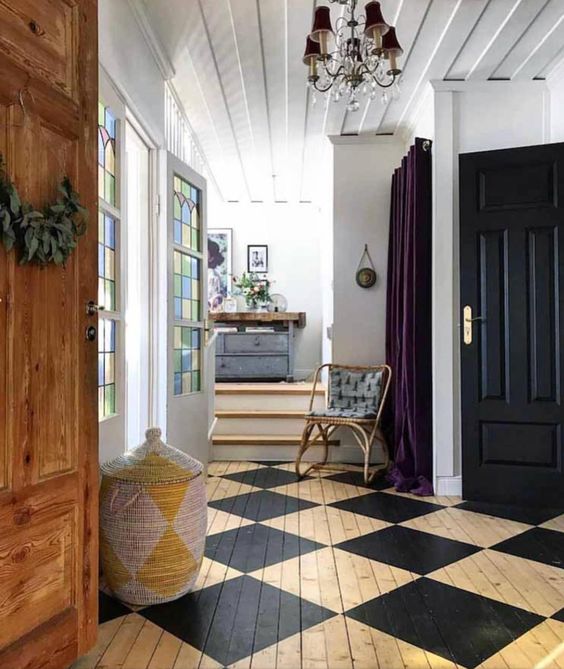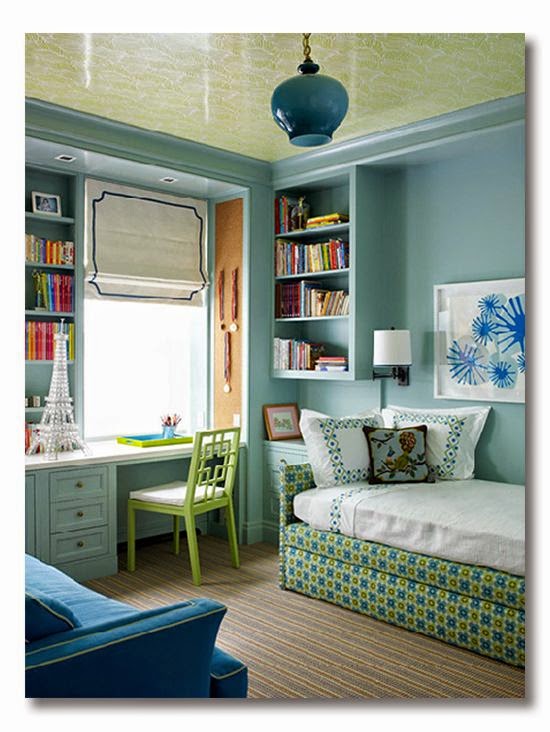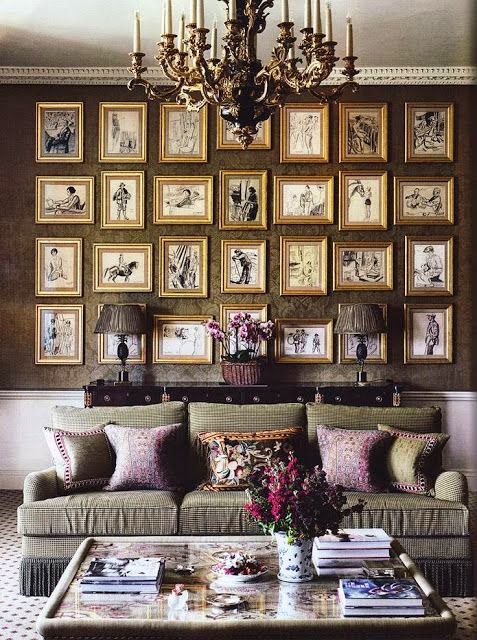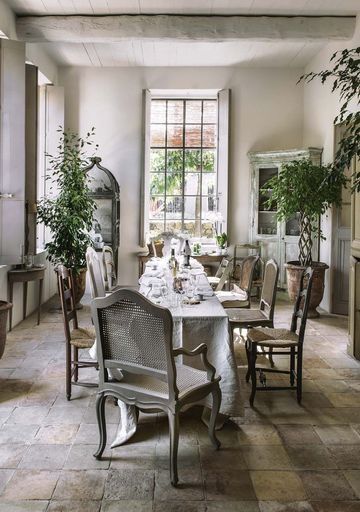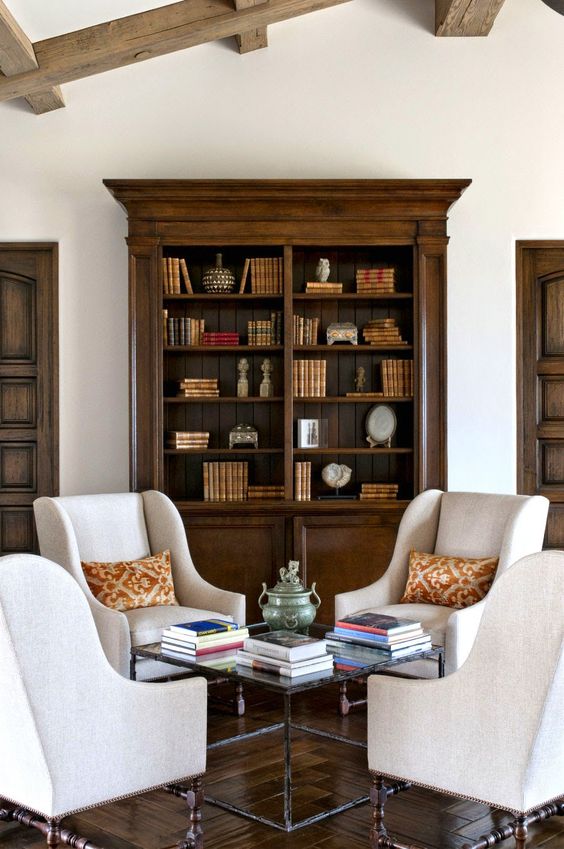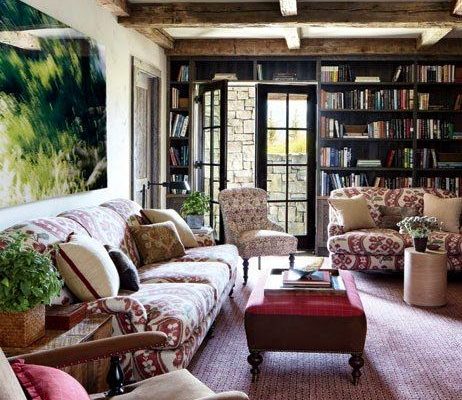Interior design, architecture and art are all visual fields and the language we use to describe such things is often subjective. But there is terminology used in the professions of architecture and design, and there are explanations as to why a space may appeal to you. It’s not only a matter of personal taste or the styles you’ve been exposed to, though that has a lot to do with it too. It’s also because it employs elements and principles of interior design that we as individuals are naturally attracted to, somewhat like the attraction we feel towards water and fire.
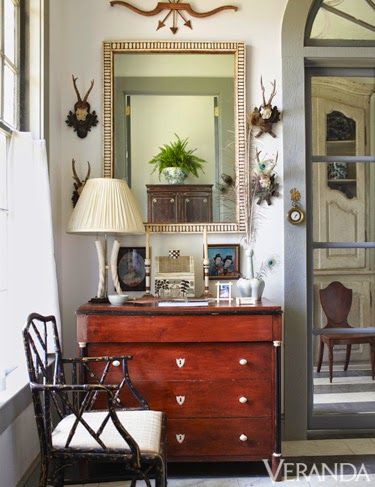
Furlow Gatewood
The Elements and Principles of Interior Design
According to college design textbook “Inside Today’s Home” by LuAnn Nissen, the elements of design are space, form, line, texture, light and color while the principles of design are balance (symmetrical, asymmetrical and radial), rhythm (repetition, progression, transition and contrast), emphasis, scale/proportion and harmony (unity and variety).
These terms provide designers with a vocabulary for various elements of design, as well as an explanation as to how and why the elements work together. Today is part one of a two-part series on The Elements and Principles of Design.
Via A and A Styling Tips
The Elements of Design
Space
In interior design the term space refers to a room or area. Spaces can be created by putting walls together to form an enclosure but there are appealing and unappealing enclosures. An architect or designer controls and improves a space by using certain design elements to achieve a sense of spaciousness, or the opposite of spaciousness: intimacy.
Fieldstone Design
There are many ways to increase the feeling of spaciousness in a space such as keeping furniture and accessories to a minimum; using small scale furniture and textile patterns; selecting colors that are cool and light with little or no contrast; placing furniture close to and paralleling walls; use of windows; and using mirrors to create reflected space.
To create feelings of intimacy or “coziness”, you can subdivide the space by placing furnishings perpendicular to the walls to form “room dividers”; use warm, dark colors; and choose varying heights of furniture to obstruct the views around the room.
Form and Shape
Forms and shapes fall into three basic categories: rectilinear, angled or curved lines that become the geometric shapes of the square, triangle, circle, or in solid form, the cube, pyramid, sphere, cone and cylinder. In design, these shapes serve as the basis for buildings as well as the products that go in them. Not every shape can be identified as one of these shapes obviously, but every shape contains at least one of these basic elements.
Line
In design, line usually describes the outline of a shape or space but it also attributes to our perceptions of masculinity, femininity, playfulness, or austerity depending on the line’s direction, angularity or amount of curve.
Vertical Line
Lines evoke feelings of formality and aspirations. Horizontal lines are restful and informal and are often used in contemporary designs; diagonal lines are active and dynamic and suggest upward or downward movement, small, curved lines are playful; and wide, horizontal curves suggest gentle, relaxed movement. Line is seen in the lofty height of a vaulted entrance, or the low and restful, horizontal surface of a bed.
Texture
Smooth or rough, texture describes the tactile feel or appearance of the surface of an object like stone, mohair or chenille fabrics, or a woven basket. Texture can be ornamental; it can absorb or amplify sound; and is a factor in the maintenance of an object. The shiny surface of a glass table is easier to clean but shows every little smudge. The rough surface of a stone hearth shows little dirt but is harder to clean.
Light
Light is important to our physical and psychological responses. It affects our mood and can change the appearance of our surroundings. The style of your home’s architecture will play a part in the amount of indoor light you have. Spanish Revival style is known for romantic, nuanced light play. Modern architecture with its wide expanses of glass brings the outdoors inside. Each has a prominent place in design, but aging is a factor in all of us. If you are planning your forever home, plan one with plenty of natural light.
via Design Sponge
The amount of natural light a home has is subject to design trends. Today’s homeowner seems to prefer a light filled home. Skylights and solar tubes have been a boon to many dark and dreary interiors.
Color
Color is a powerful design tool. The various theories about color are based on art, science and psychology. To accurately describe a color, you would refer to the term’s hue, the actual name of the color; value, the lightness or darkness of a color; and intensity, how pure versus how muted or grayed the color is.
Color Basics
There are primary hues, secondary hues and tertiary hues. Primary hues are colors that can’t be mixed. They are primary red, yellow and blue. Secondary hues are mixtures of primary colors: orange, green, and violet. Tertiary hues are mixtures of secondary hues. Combinations of harmonious colors include monochromatic, which is based on various values and intensities of one hue; analogous, which is based on two or more hues that are next to one another on the color wheel; and complementary, which is based on colors directly opposite one another on the color wheel.
Reactions to Color
Reaction to color is highly subjective. Each comes with its own personality and/or stigma attached. For instance, yellow can be sunny for some of us, or signify cowardice for others. Pink is a pretty, feminine color that some love and other’s find cloying. Black can be classy or morose. White can be pristine and bright or overly sterile. Red can be vibrant and classic, or it can be cheap and gauche. The affect depends on the context in which the color is used, what it’s placed next to, and the individual’s emotion towards it. And sometimes it’s based on effective branding, such as the green of a Starbuck’s logo or the orange packaging of luxury brand Hermes’.
Via Sunset Lane Blog
Next post…If the elements are the tools or “raw ingredients” of interior design, the principles are the recipe. In two weeks from today, Part Two: The Principles of Design.
via Little Green Notebook Blog
Well, that’s it for today! I hope you found this article super helpful.
Here’s a little bonus for you. My free download, The Functional Home Blueprint will help you clear the clutter and redefine the zones in your home. In it you’ll learn to create work zones to get you organized and focused; how to make better areas in your home for downtime and re- connecting with yourself; how to carve out an exercise/wellness space even when there’s no room; and maximize your kitchen so you follow through with healthy eating.
Enjoy! Bye for now.
Shiree’
PS. Here’s that link again.
For more goodness on Interior Design, check out my article How to Get a Wellness-Inspired, Living and Dining Room.
Edit this post.

